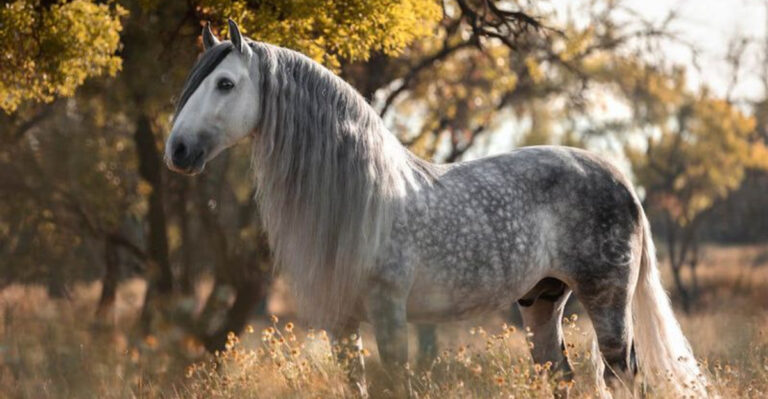12 Things You Should Know About Cone Snails Before Picking Up Their Shells On Your Next Beach Visit
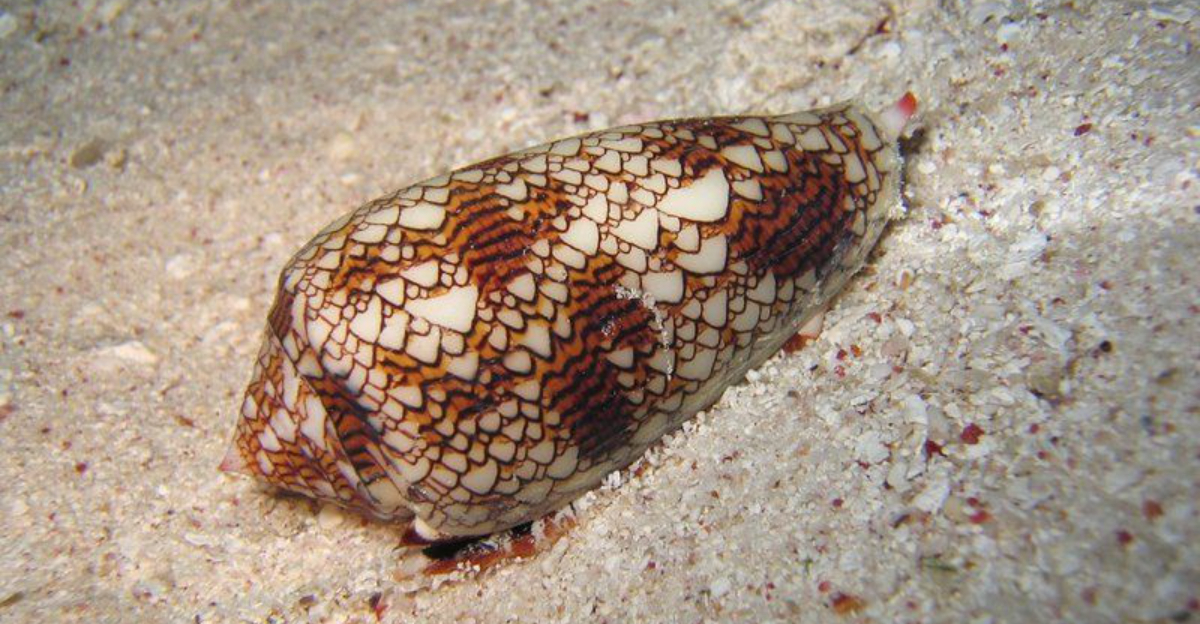
Beachcombing for beautiful seashells is a popular vacation activity, but not all shells are safe to handle. Cone snails, with their stunning geometric patterns and colors, might catch your eye during your seaside stroll.
While these marine mollusks create some of the most attractive shells in the ocean, they’re also among the most venomous creatures on the planet. Before you reach down to add that pretty cone-shaped shell to your collection, here’s what you need to know to stay safe.
1. Deadly Venom Lurks Inside
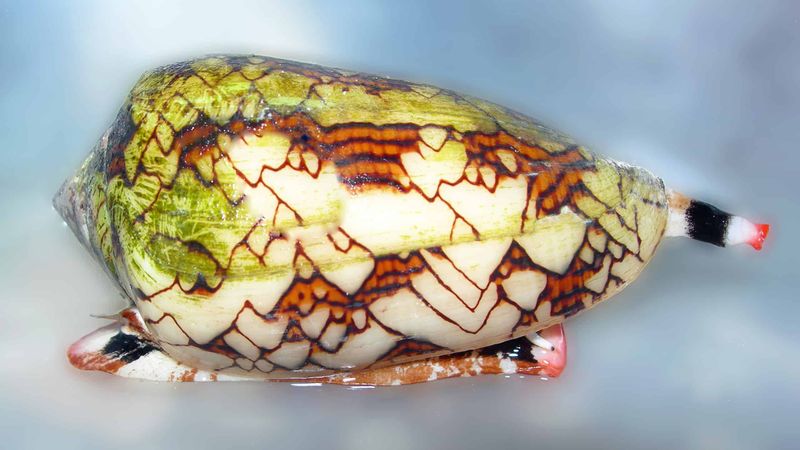
Beneath the gorgeous patterned shell lies a hunter armed with one of the ocean’s most potent venoms. Cone snails use a modified tooth – essentially a harpoon-like dart – to inject a cocktail of toxins that can paralyze prey instantly.
Some larger species contain venom powerful enough to kill humans. The geography cone (Conus geographus), nicknamed the “cigarette cone” because after being stung, you supposedly only have enough time to smoke a cigarette before dying.
Even empty-looking shells might house these creatures, as they can withdraw completely inside. Never pick up cone shells with your bare hands – the snail might still be home!
2. No Antidote Available
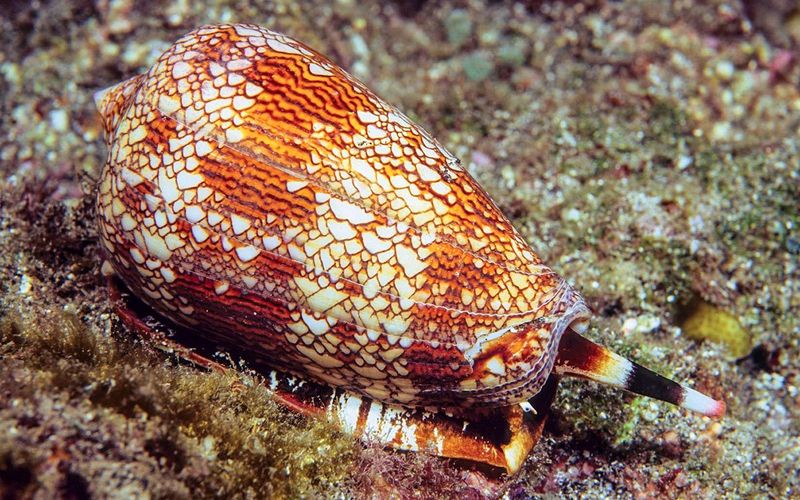
Medical science hasn’t developed an antivenom specifically for cone snail stings. If someone gets stung, emergency treatment focuses on managing symptoms rather than neutralizing the toxin itself.
Hospitals can only provide supportive care – maintaining breathing, controlling pain, and preventing further venom spread. This makes cone snail encounters particularly dangerous in remote beach locations far from medical facilities.
The venom contains unique compounds called conotoxins that target the nervous system with remarkable precision. Scientists actually study these toxins for potential medical applications, including powerful non-addictive painkillers.
3. Lightning-Fast Hunters
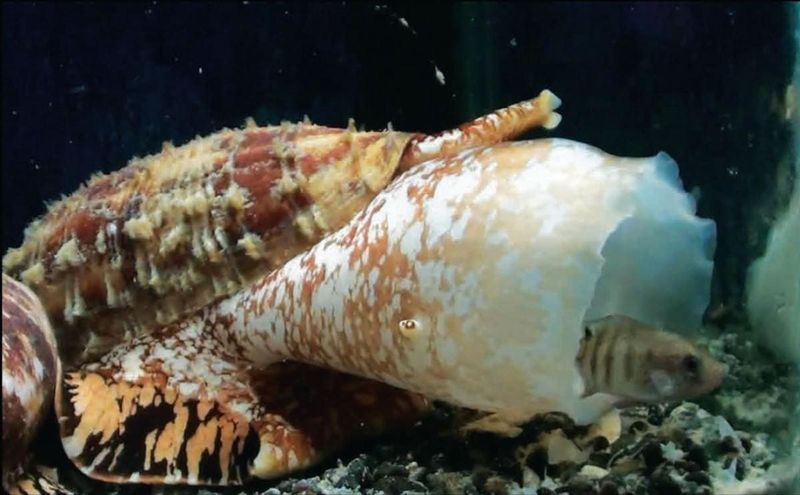
Don’t be fooled by their slow-moving appearance. Cone snails are ambush predators with surprising speed when striking. They detect prey using chemosensory organs, then launch their venomous harpoon faster than the human eye can follow.
The harpoon extends from a modified tooth called a radula, which can stretch the entire length of the snail’s body. This specialized hunting tool works like a spear gun, allowing the snail to impale fish, worms, or even other mollusks from a distance.
After striking, they reel in their paralyzed meal using the harpoon like a fishing line. The whole attack happens in milliseconds!
4. Masters Of Disguise
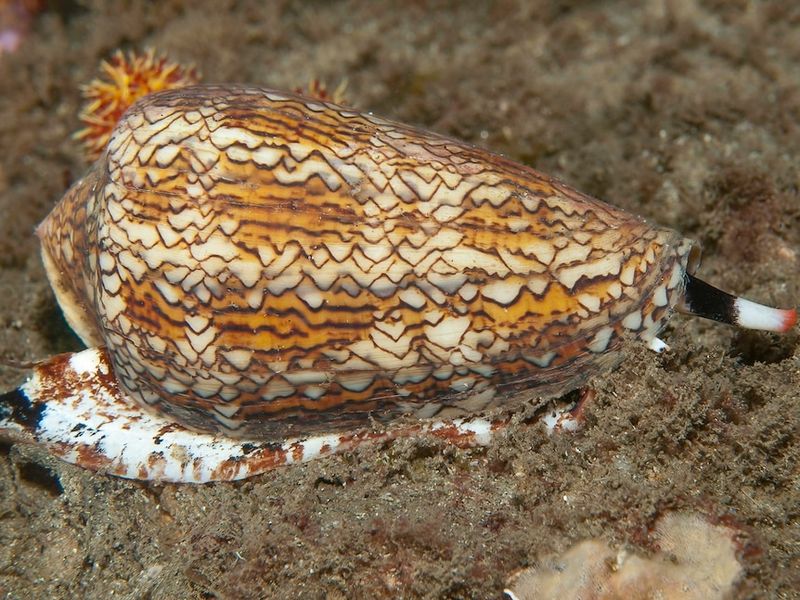
Cone snails are excellent at blending into their surroundings. Their shells often develop algae growth or become covered with sand, making them nearly invisible against the seafloor. This camouflage serves two purposes: hiding from predators and ambushing prey.
Many beachcombers have accidentally picked up what they thought was an empty shell or a rock, only to discover the dangerous creature inside. The snail can completely withdraw into its shell, leaving no visible signs it’s occupied.
Some species even bury themselves in sand with only a small breathing tube exposed, creating a perfect hiding spot to ambush passing fish.
5. Beautiful but Deadly Variety
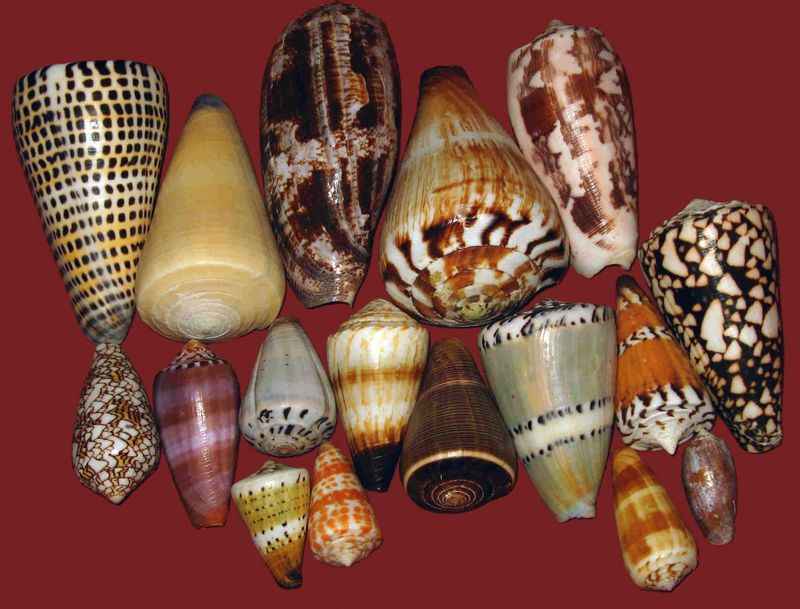
Over 800 different cone snail species exist worldwide, each with unique shell patterns and colors. The most dangerous species tend to have the most beautiful shells, which unfortunately makes them attractive to collectors.
The geography cone (Conus geographus) features map-like patterns in brown and white. The textile cone (Conus textile) displays intricate gold and brown markings resembling fabric. The tulip cone (Conus tulipa) has reddish-orange patterns reminiscent of flower petals.
While not all species are lethal to humans, identifying the dangerous ones requires expert knowledge. Better safe than sorry – admire all cone shells from a distance.
6. They’re Getting Closer To Shore
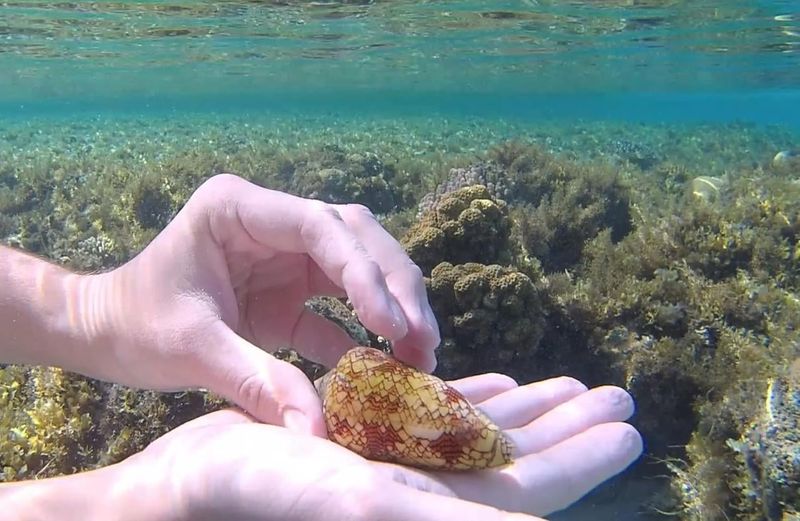
Climate change and warming ocean temperatures are altering marine ecosystems worldwide. Some cone snail species traditionally found in deeper waters have begun appearing in shallower areas where beachgoers swim and wade.
Researchers have documented range expansions for several cone snail species. As tropical waters warm, these creatures follow their preferred temperature zones, sometimes bringing them closer to popular beaches.
This shift increases the likelihood of human encounters with species previously rare in recreational areas. Beach safety officials in some regions now include cone snails in their warning systems alongside jellyfish and other hazardous marine life.
7. What A Sting Feels Like
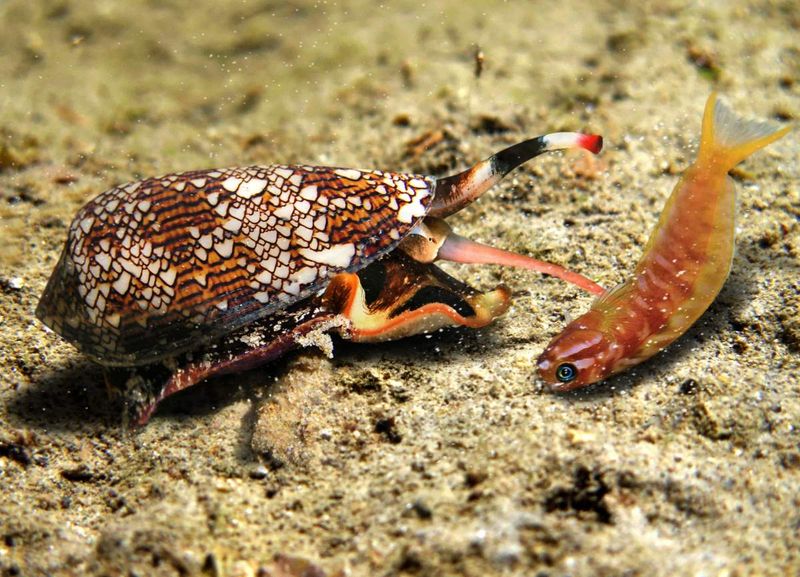
Victims describe a cone snail sting as initially feeling like a bee sting – a sharp prick followed by burning pain. This deceptively mild beginning quickly escalates as the neurotoxins spread through the body.
Numbness and tingling radiate from the sting site, often followed by muscle paralysis, blurred vision, and difficulty breathing. Some people experience nausea, vomiting, and altered consciousness. The most dangerous stings can lead to respiratory failure within hours if not treated.
The severity depends on the species, amount of venom injected, and the victim’s body size. Children face greater risk due to their smaller body mass compared to the venom dose.
8. Their Venom Has Medical Value
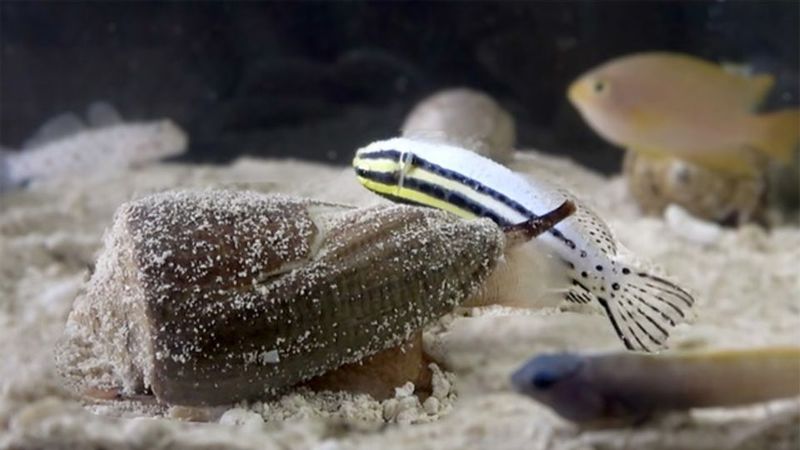
The same toxins that make cone snails deadly also hold tremendous potential for medicine. Scientists have developed a powerful non-addictive painkiller called Prialt from cone snail venom that’s now FDA-approved for treating severe chronic pain.
Researchers are investigating other conotoxins as potential treatments for epilepsy, Alzheimer’s disease, Parkinson’s disease, and even certain cancers. Each cone snail species produces a unique venom cocktail containing up to 200 different compounds, creating a vast pharmacological treasure trove.
Conservation efforts now focus on protecting these creatures not just for ecological reasons but for their potential to revolutionize medicine.
9. Safe Shell Collection Tips
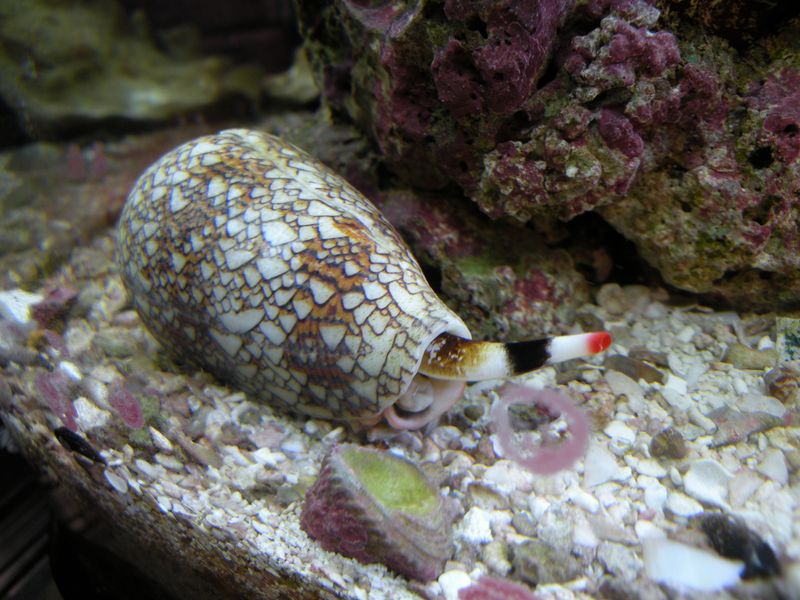
If you’re determined to collect shells, always use a tool – never your bare hands. A long stick can gently flip over shells to check if they’re occupied. Better yet, carry tongs specifically for picking up shells.
Watch for movement – if a shell seems to be moving on its own or has a visible opening covered by a door-like structure (operculum), it’s likely inhabited. Never put collected shells in pockets or bags against your body where a hidden snail could sting through fabric.
Consider photographing beautiful shells instead of collecting them. This preserves beach ecosystems and eliminates any risk of dangerous encounters.
10. They’re Not Aggressive (But Still Dangerous)
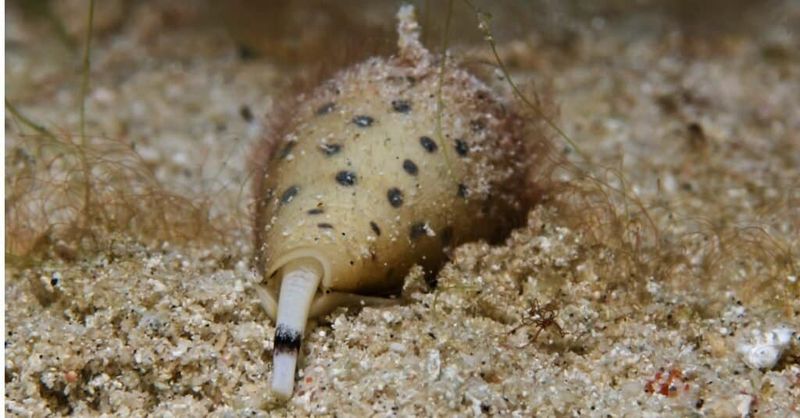
Cone snails don’t actively hunt humans or attack out of aggression. Stings typically occur when people handle the shells, essentially forcing the snail into a defensive response. They’re simply trying to protect themselves from what they perceive as a threat.
These creatures move slowly and prefer to hide rather than confront larger animals. Their venom evolved to quickly immobilize fish and other prey, not to target humans specifically.
Understanding this behavior helps put the risk in perspective. Respect their space, don’t handle their shells, and you’ll likely never have a problem with these remarkable but dangerous mollusks.
11. Emergency Response Protocol
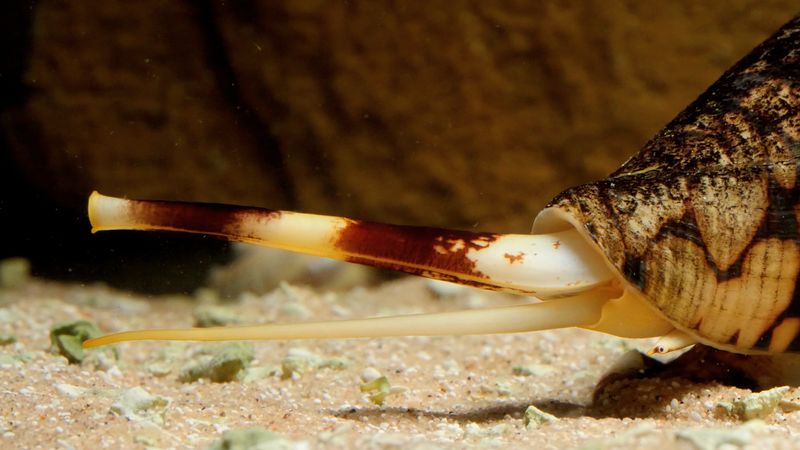
If someone gets stung by a cone snail, immediate action is crucial. First, immobilize the affected area to slow venom spread and call emergency services immediately. Apply pressure bandaging above the sting site (toward the heart) to restrict venom movement through the lymphatic system.
Do not apply ice, cut the wound, or attempt to suck out venom – these folk remedies can worsen the situation. Try to identify the cone snail species if possible, as this information helps medical professionals.
Keep the victim calm and still while awaiting help. Elevated heart rate can accelerate venom circulation throughout the body.
12. Where You’ll Find Them Worldwide
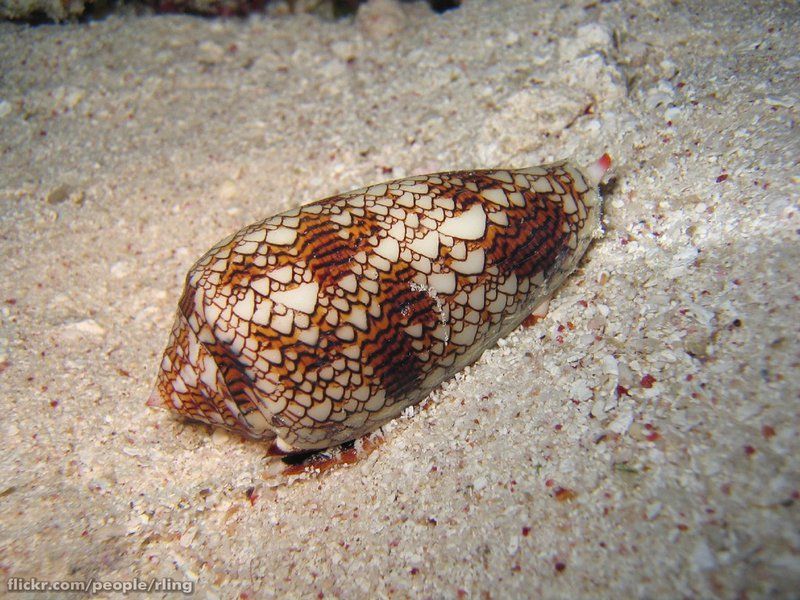
Cone snails inhabit tropical and subtropical waters globally, with highest concentrations in the Indo-Pacific region. The Great Barrier Reef, Philippines, Indonesia, and Hawaii harbor particularly diverse cone snail populations, including some of the most venomous species.
They typically prefer shallow, warm waters around coral reefs or sandy bottoms. Popular tourist destinations like the Caribbean, Florida Keys, and Mediterranean Sea also host cone snail species, though generally less dangerous varieties.
Beach visitors in Australia face the highest risk, as Australian waters contain the deadly geography cone and other highly venomous species. Always check local beach advisories when traveling to tropical destinations.




